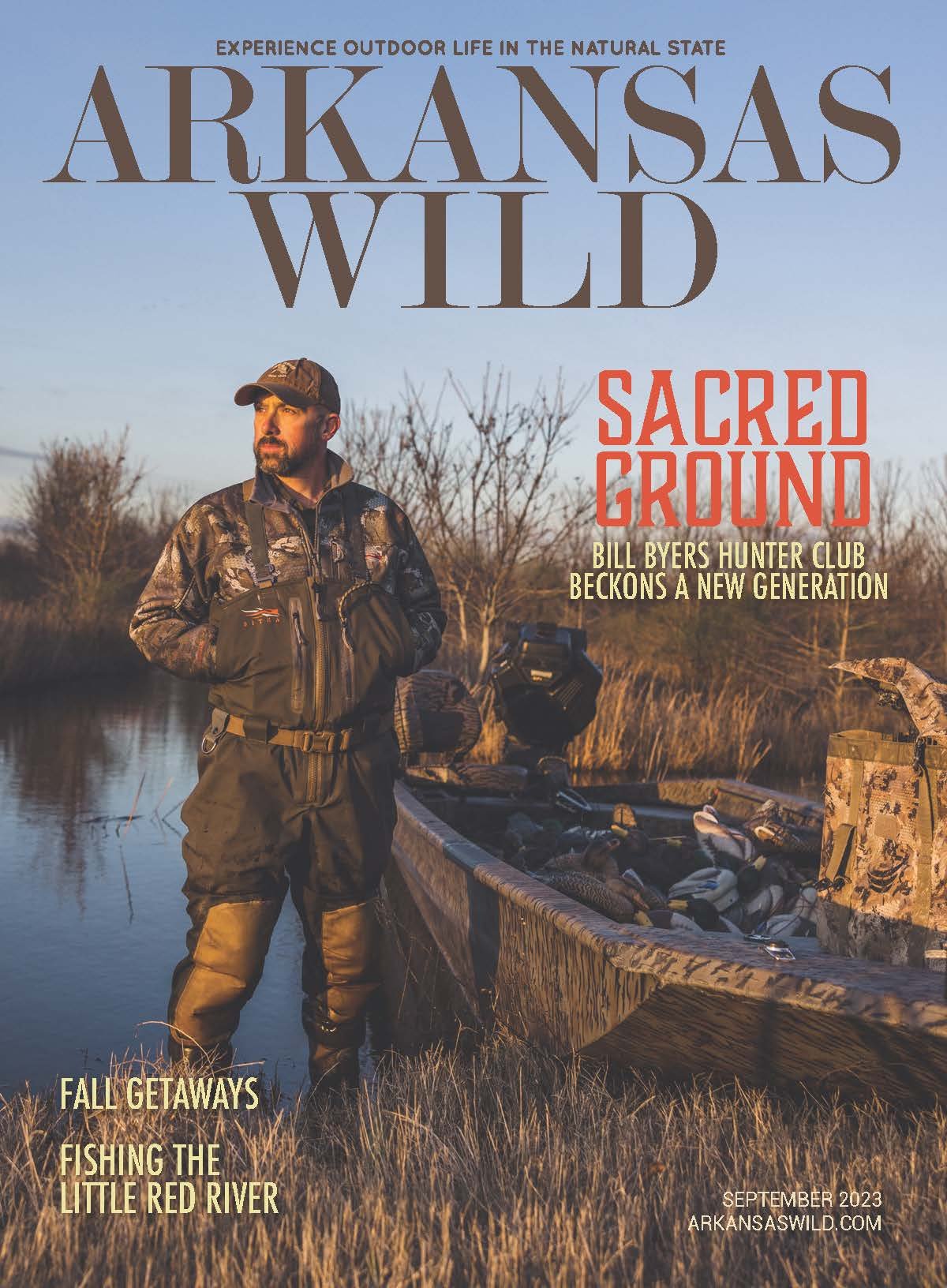Mountain bikers tackle an Iron Mountain trail. Arkansas is nationally known for its trails systems, providing tourism dollars and quality of life for natives.
Happy Trails
Many hands make light work on Arkansas’s trails
By Bob Robinson
Arkansas’s treasure is her trails, the key to enjoying the state’s vast inventory of natural areas. Trails not only serve the thousands of tourists that visit the state every year, but also serve as a key economic development tool in attracting new residents while adding to natives’ overall quality of life
For decades, volunteer groups like Ozark Off Road Cyclists, Friends of the Ouachita Trail, and individual trail builders constructed mountain bike trails across Arkansas.
Concerned citizens and conservation groups have helped keep Arkansas's quiet trails pristine, like this one at Hobbs State Park/Conservation Area.
Until recent years most soft surface trails in the state were constructed by volunteers. However, with the explosion of trails in The Natural State, professional trail builders have taken the lead. Local companies such as Progressive Trail Design, Rogue Trails, and other out-of-state crews have added substantially to the total number of off-road trails in the state.
Depending on ownership of the land on which trails are built, there are varying requirements that must be met to build environmentally safe and sustainable trails.
Kyle Copeland, trail supervisor for the Arkansas State Parks Trail Crew, explained all trail construction on state park properties, such as The Boston Mountain Trail located at Lake Fort Smith State Park, must be preceded by environmental and impact studies. Historically significant structures are thus identified, such as rock walls and homestead remains, which the project must avoid when laying out the route.
Kessler Mountain
As far back as the early 1900s, Kessler Mountain has been identified as a significant area to be protected and preserved, with elements not found anywhere else. By addressing the preservation needs of the area, Ozark Off Road Cyclists and other stakeholders worked together to satisfy concerns of all involved parties to complete an impressive network of trails.
Chuck Maxwell, president of OORC, has more than a decade of experience building sustainable trails following stringent trail-building guidelines taught by the International Mountain Bicycling Association . Under his leadership, OORC’s work on Fayetteville’s Kessler Mountain is a success story for other communities to follow when planning trails in their own area.
The key, as Maxwell explained, was putting together a stakeholder group to collaborate and ensure all points of view are heard. On the Kessler Mountain project, this included the city of Fayetteville and several key nonprofits, notably NWA Land Trust, along with key environmental groups.
Copeland attends Professional Trail Builders Association training programs covering such things as terrain dynamics and soil conservation to better understand how water, wind and other natural activities affect trail sustainability.
With a degree in Environmental Science and Engineering and having worked nine years for the state on stream restoration projects, Phil Penny, owner of Rogue Trails, also incorporates lessons learned in stream restoration into trail construction.
Penny said that even when constructing trails on non-government owned lands, many of which do not require impact studies, he still follows proper environmentally safe guidelines to build sustainable trails. As he explained, “It’s the right thing to do.”
Another company, Progressive Trail Design, specializes in soft surface trails, having designed and constructed trails nationwide since 2006. The company is behind many unique and challenging bike trails in The Natural State.
Dave Renko, senior foreman for the company, is well schooled in trail design and construction which mitigate the forces of nature. He follows established principles and standards of the International Mountain Bicycling Association, and state and federal regulatory agencies when constructing trails.




